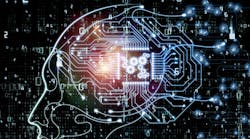President Donald Trump signed an executive order Monday directing the U.S. government to prioritize artificial intelligence in its research and development spending, the White House said.
The order, which comes amid concerns about China’s ambitions to dominate the sector and the likelihood of disruption for workers as the technology automates millions of jobs, doesn’t outline specific funding goals, but says it aims to ensure that AI develops in a manner that reflects U.S. values and to push training for the future workforce.
Ivanka Trump and Chris Liddell, a former Microsoft Corp. chief financial officer who is now a deputy chief of staff to the president, planned to attend the signing ceremony, according to a statement the White House issued in advance.
The moves occur less than a week after Trump’s State of the Union address, when he said investments in “cutting edge industries of the future” are “a necessity.” The White House’s Office of Science and Technology Policy said in a statement during the speech on Feb. 5 that AI was among the industries Trump was referring to, alongside 5G broadband, advanced manufacturing and others.
Tech leaders have also been pressing the administration for additional research and development funding and a more focused education strategy.
In December, top tech chief executives -- including Google’s Sundar Pichai, International Business Machines Corp.’s Ginni Rometty and Microsoft’s Satya Nadella -- met with White House officials, including Ivanka Trump, on similar topics.
In May, a top White House technology official, Michael Kratsios, assured participants from more than 100 companies across several sectors of the economy that the administration would pursue a hands-off regulatory approach to AI to allow it to grow unfettered.
Monday’s order envisions regulatory guidance to ensure the technology is trustworthy, said the White House official.
Leaders from tech companies -- including Intel Corp. and IBM -- and the Consumer Technology Association applauded the order.
Senator Mark Warner of Virginia, the top Democrat on the Senate Intelligence Committee, praised some aspects of the order but criticized its tone. “The tone of this executive order reflects a laissez-faire approach to AI development that I worry will have the U.S. repeating the mistakes it has made in treating digital technologies as inherently positive forces, with insufficient consideration paid to their misapplication,” he said.
The administration’s action follows moves by China to establish dominance in a technology with far-reaching implications for national security. The Chinese government has made a 10-fold increase in AI output a national priority for coming years, and many companies there are deploying machine-learning systems to update banking services, identify faces in crowds, and control drones.
The order doesn’t cover intellectual property protections or export controls, which the administration has sought to use to constrain China in other areas, but aims to open markets for U.S. companies.
By Ben Brody










